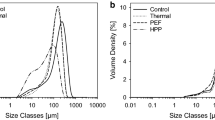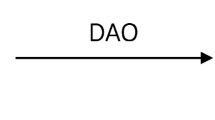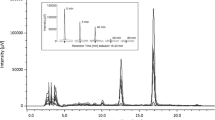Abstract
The degradation and epimerization of ergot alkaloids (EAs) in rye flour were investigated after baking cookies and subsequently subjecting them to an in vitro digestion model. Different steps of digestion were analyzed using salivary, gastric, and duodenal juices. The degradation and bidirectional conversion of the toxicologically relevant (R)-epimers and the biologically inactive (S)-epimers for seven pairs of EAs were determined by a HPLC method coupled with fluorescence detection. Baking cookies resulted in degradation of EAs (2–30 %) and a shift in the epimeric ratio toward the (S)-epimer for all EAs. The applied digestion model led to a selective toxification of ergotamine and ergosine, two ergotamine-type EAs. The initial percentage of the toxic (R)-epimer in relation to the total toxin content was considerably increased after digestion of cookies. Ergotamine and ergosine increased from 32 to 51 % and 35 to 55 %, respectively. In contrast, EAs of the ergotoxine type (ergocornine, α- and β-ergocryptine, and ergocristine) showed an epimeric shift toward their biologically inactive (S)-epimers. Further experiments indicated that the selective epimerization of ergotamine EAs occurs in the duodenal juice only. These results demonstrate that toxification of EAs in the intestinal tract should be taken into consideration.






Similar content being viewed by others
References
Lee MR (2009) J R Coll Edinb 39(2):179–184
Haarmann T, Rolke Y, Giesbert S, Tudzynski P (2009) Mol Plant Pathol 10(4):563–577
De Costa C (2002) Lancet 359(9319):1768–1770
Stoll A (1945) Helv Chim Acta 28(6):1283–1308
Pierri L, Pitman IH, Rae ID, Winkler DA, Andrews PR (1982) J Med Chem 25(8):937–942
Hollingsworth M, Edwards D, Miller M (1988) Eur J Pharmacol 158(1–2):79–84
Komarova EL, Tolkachev ON (2001) Pharm Chem J 35(9):37–45
Krska R, Stubbings G, Macarthur R, Crews C (2008) Anal Bioanal Chem 391(2):563–576
Hafner M, Sulyok M, Schuhmacher R, Crews C, Krska R (2008) World Mycotoxin J 1(1):67–78
Smith DJ, Shappell NW (2002) J Anim Sci 80(6):1616–1622
Merkel S, Köppen R, Koch M, Emmerling F, Nehls I (2012) Mycotoxin Res 28(1):59–66
Sund RB (1963) Acta Pharmacol Tox 20(3):233–242
Young JC, Chen ZJ (1982) J Environ Sci Health Part B-Pestic Contam Agric Wastes 17(2):93–107
Young JC (1981) J Environ Sci Health Part B-Pestic Contam Agric Wastes 16(1):83–111
Young JC (1981) J Environ Sci Health Part B-Pestic Contam Agric Wastes 16(4):381–393
Dusemund B, Altmann HJ, Lampen A (2006) J Verbrauch Lebensm 1:150–152
Crews C, Anderson WAC, Rees G, Krska R (2009) Food Addit Contam Part B-Surveill 2(1):79–85
Scott PM, Lawrence GA (1982) J Agr Food Chem 30(3):445–450
Bürk G, Hobel W, Richt A (2006) Mol Nutr Food Res 50(4–5):437–442
Fajardo JE, Dexter JE, Roscoe MM, Nowicki TW (1995) Cereal Chem 72(3):291–298
Schwarz PB, Hill NS, Rottinghaus GE (2007) J Am Soc Brew Chem 65(1):1–8
Wolff J, Neudecker C, Klug C, Weber R (1988) Z Ernährungswiss 27(1):1–22
Mainka S, Dänicke S, Ueberschär KH, Reichenbach HGV (2005) Mycotoxin Res 21(2):116–119
Young JC, Chen ZJ, Marquardt RR (1983) J Agr Food Chem 31(2):413–415
Lampen A, Klaffke H (2006) J Verbrauch Lebensm 1(2):148–149
Oomen AG, Rompelberg CJM, Bruil MA, Dobbe CJG, Pereboom D, Sips A (2003) Arch Environ Contam Toxicol 44(3):281–287
Dall'Asta C, Falavigna C, Galaverna G, Dossena A, Marchelli R (2010) J Agr Food Chem 58(22):12042–12047
Müller C, Kemmlein S, Klaffke H, Krauthause W, Preiss-Weigert A, Wittkowski R (2009) Mol Nutr Food Res 53(4):500–507
Arribas-Lorenzo G, Fogliano V, Morales FJ (2009) Eur Food Res Technol 229(1):63–72
DIN 19738 (2004) Beuth Verlag, Berlin.
Source of funding
All work was financed by BAM Federal Institute for Materials Research and Testing, Richard-Willstätter-Str. 11, 12489 Berlin, Germany. There was no external financial support.
Conflicts of interest
There are no conflicts of interest.
Author information
Authors and Affiliations
Corresponding author
Electronic supplementary material
Below is the link to the electronic supplementary material.
ESM 1
(PDF 204 kb)
Rights and permissions
About this article
Cite this article
Merkel, S., Dib, B., Maul, R. et al. Degradation and epimerization of ergot alkaloids after baking and in vitro digestion. Anal Bioanal Chem 404, 2489–2497 (2012). https://doi.org/10.1007/s00216-012-6386-8
Received:
Revised:
Accepted:
Published:
Issue Date:
DOI: https://doi.org/10.1007/s00216-012-6386-8




